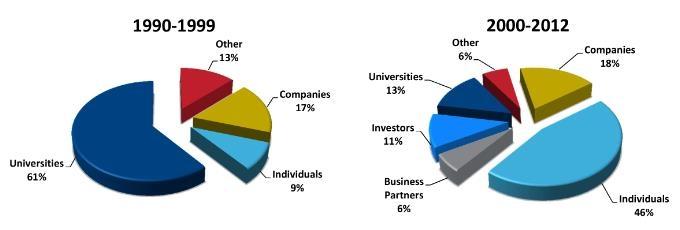A new report by FASEB shows that animal rights extremists focused more on targeting individuals than research institutions in the 2000s.

The Federation of American Societies for Experimental Biology (FASEB) recently released a report entitled: “The Threat of Extremism to Medical Research: Best Practices to Mitigate Risk through Preparation and Communication”. This report has been covered by a number of science outlets including Science. Let us take a closer look at it.
First of all, it is important to note that the vast majority of those who oppose the use of animals in research do so in a legal and ethical manner. However, there remains a tiny minority of animal rights activists who resort to “illegal, threatening, and violent actions in support of their goal”. This report looks at the impact of those who pursue this illegal and misanthropic approach to reaching their goals. The most striking aspect of the report was that between the 1990s and 2000s there was a big swing in animal rights targets, from universities to individuals. This was calculated using data from The Foundation for Biomedical Research.
FASEB also noted that since the 2000s there had been an increase in secondary and tertiary targeting – something which has been particularly effective at preventing the transport of animals and thus raising the cost of animal research.
First of all, it is important to note that the vast majority of those who oppose the use of animals in research do so in a legal and ethical manner. However, there remains a tiny minority of animal rights activists who resort to “illegal, threatening, and violent actions in support of their goal”. This report looks at the impact of those who pursue this illegal and misanthropic approach to reaching their goals. The most striking aspect of the report was that between the 1990s and 2000s there was a big swing in animal rights targets, from universities to individuals. This was calculated using data from The Foundation for Biomedical Research.
FASEB also noted that since the 2000s there had been an increase in secondary and tertiary targeting – something which has been particularly effective at preventing the transport of animals and thus raising the cost of animal research.

The most obvious change between the 1990s and 2000s is the change from animal rights activists targeting universities to individuals. The FASEB report makes a number of recommendations on how to mitigate the risks of animal rights extremism. For individuals who might be regarded as “high risk” due to the nature of the research they do, FASEB recommends:
- Limiting the amount of personally identifiable information available online.
- Using internet search tools (like Google Alerts) to monitor any animal rights activity about you
- Be aware of the local laws regarding demonstrations, trespassing and harassment
- Document any animal rights activity aimed at you, but do not engage directly with it
While, in some ways, the report may seem bleak – with an increase in individuals being targeted – the time frame used hides some important facts. The extremism mentioned from 2000-2012 was concentred in the early 2000s. Better policing and a more open approach to discussing animal research has helped cause a fall in animal rights extremism in many countries. For example, despite the apparent rise in the targeting of individuals, there have been no reports of individuals in the UK being directly targeted by illegal animal rights activism in the last five years.
The report also deals more positively with issues relating to openness, recommending institutions become more open and transparent to reduce risks. As the report says: “Open communication with the public on how animal research is conducted can foster good will and correct public misconceptions”. Ways of doing this include openly mentioning animals in the role of scientific breakthroughs at your institution, and building relationships with local and national reporters. Examples of successful transparency mentioned include the University of Leicester, which, in 2012, invited local and national journalists to tour its new facilities upon their opening.
The report also deals more positively with issues relating to openness, recommending institutions become more open and transparent to reduce risks. As the report says: “Open communication with the public on how animal research is conducted can foster good will and correct public misconceptions”. Ways of doing this include openly mentioning animals in the role of scientific breakthroughs at your institution, and building relationships with local and national reporters. Examples of successful transparency mentioned include the University of Leicester, which, in 2012, invited local and national journalists to tour its new facilities upon their opening.
